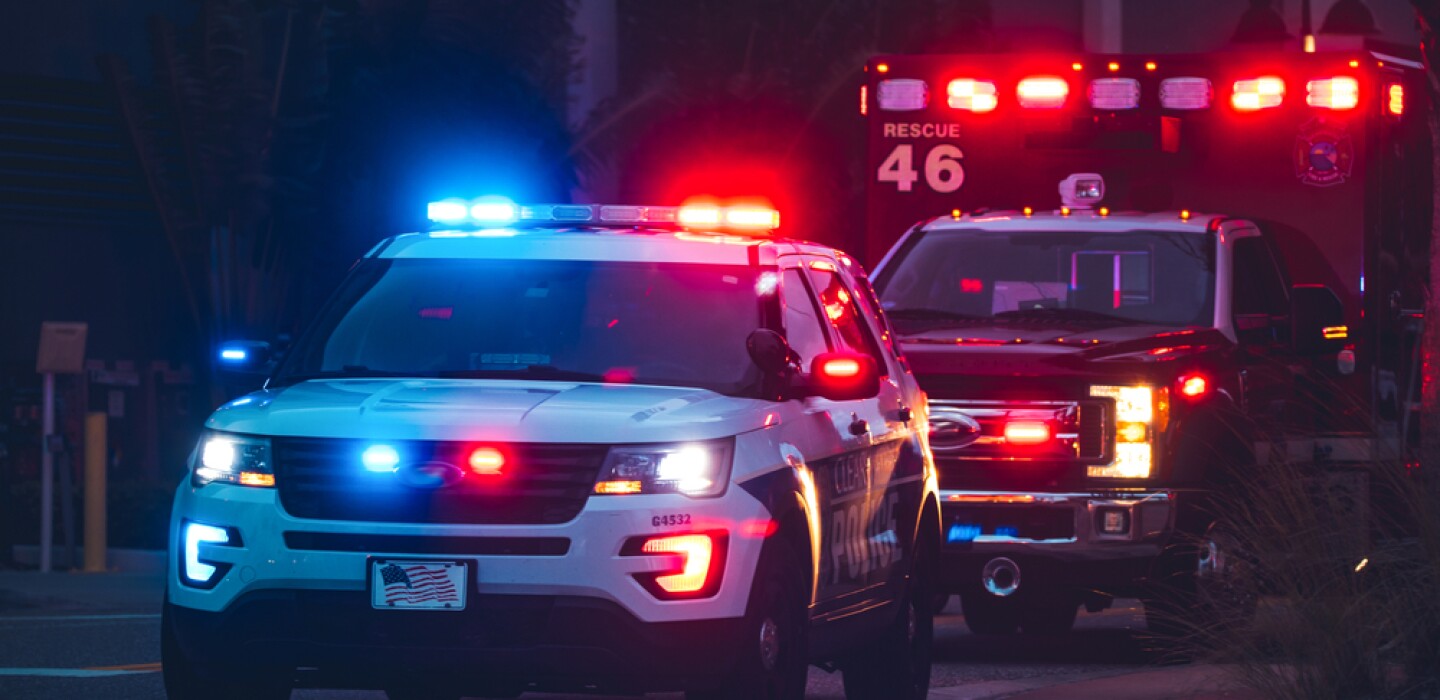
Experts Convene to Discuss Colorado Springs Road Safety
(TNS) – The message behind an elaborate crash scene staged with real cars in downtown Colorado Springs? A wider road shoulder could save the lives of motorists and first responders.
The audience for the demonstration Monday included road planners from across the state, convened in Colorado Springs to discuss emerging strategies and recent news in the field of transit safety. The Colorado Department of Transportation conference lasted two days and covered everything from roundabout patterns to protecting pregnant drivers.
At the crash scene, Jori Ernst, CDOT Office of Emergency Management program manager, said the demonstration gave planners and engineers a rare firsthand view of how the way they build new roads could protect or endanger in the event of a crash.
“Lots of times when they’re building roads they’re not thinking of wide shoulders,” he said. “They’ll put a 2-foot shoulder in, and we can’t get these cars off the road far enough to open the highway.”
He said that room to move crashed vehicles off the active roadway was paramount for safety.
“For every second that the road is closed, there are secondary accidents happening, so we want to reduce that as much as possible,” he said.
Better planning might help prevent deaths like that of Cody Donahue and Jaimie Jursevics, Colorado State Patrol troopers struck and killed along Interstate 25 near Castle Rock just under a decade ago. Ernst said the subsequent widening of I-25 over “The Gap” between Castle Rock and Monument addressed some of the safety issues.
Gov. Polis: I-25 ‘Gap’ will open in mid-December, a year ahead of schedule
By mid-December, the entire 18-mile reconfigured section will be fully open.
He also said that the implementation of cable rails in some sections of newer roadway helped prevent cars from being thrown back into traffic, helping avoid further crashes and keep first responders out of the road.
“Guardrails — cars hit them and they usually bounce back into traffic,” he said. “A cable rail — a car will go into it, and the car will get all wrapped up.”
Other presenters at the conference highlighted developing new road systems and better education for Colorado drivers. Hilary Isebrands, a senior roadway safety engineer with the Federal Highway Administration, sang the praises of roundabouts in a Monday presentation.
“We know that roundabouts can reduce fatal and injury crashes by up to 90 percent,” she said.
Motorcycle lane filtering will soon be legal in Colorado. Here’s how it’s different from lane splitting.
In case you missed it, come August 7, 2024, lane filtering by motorcycles will become legal in Colorado – a very significant change that will surely be noticed by motorists. Ahead of the switch, Colorado State Patrol and the Colorado Department of Transportation is working hard to educate the public on what to expect and how to prepare for motorcycles to be zipping by the side of their stopped car.
Gregory Colton, a community outreach captain with UCHealth EMS, spoke about the need for access to education for pregnant drivers on properly wearing a seat belt, a measure that could prevent prenatal fatalities and which he said about 93 percent of pregnant drivers were unaware of without outreach.
Matt Duncan, an engineer with the city of Lakewood, talked about ways to reduce pedestrian crash deaths by investigating the causes behind real cases.
Better lighting, new intersection and crosswalk configurations, roadway barriers and better intersection light timing were among solutions he said could improve driver reaction times and save pedestrian lives.
“All of these (deaths) are preventable, but you have to know what problem you need to solve,” he said.
Attendees included representatives from local agencies tasked with roadway safety in the Pikes Peak region.
Lisa Pitts, a volunteer firefighter in charge of community outreach for the Divide Fire Protection District, said she attended the conference for networking opportunities and ideas to bring back to her organization.
Storm claims two lives as rescues continue a week afterward
Two people died as a result of the snowstorm that buried parts of Teller County in up to 40 inches of wet snow March 12-15.
Pitts said she was looking for new strategies for everyday hazards like aggressive or inexperienced driving and for emergencies like the March snowstorm, in which Teller County experienced deaths related to the record snowfall.
“There are always lessons to be learned,” she said.
___
©2024 The Gazette (Colorado Springs, Colo.) Distributed by Tribune Content Agency, LLC.


Average Rating